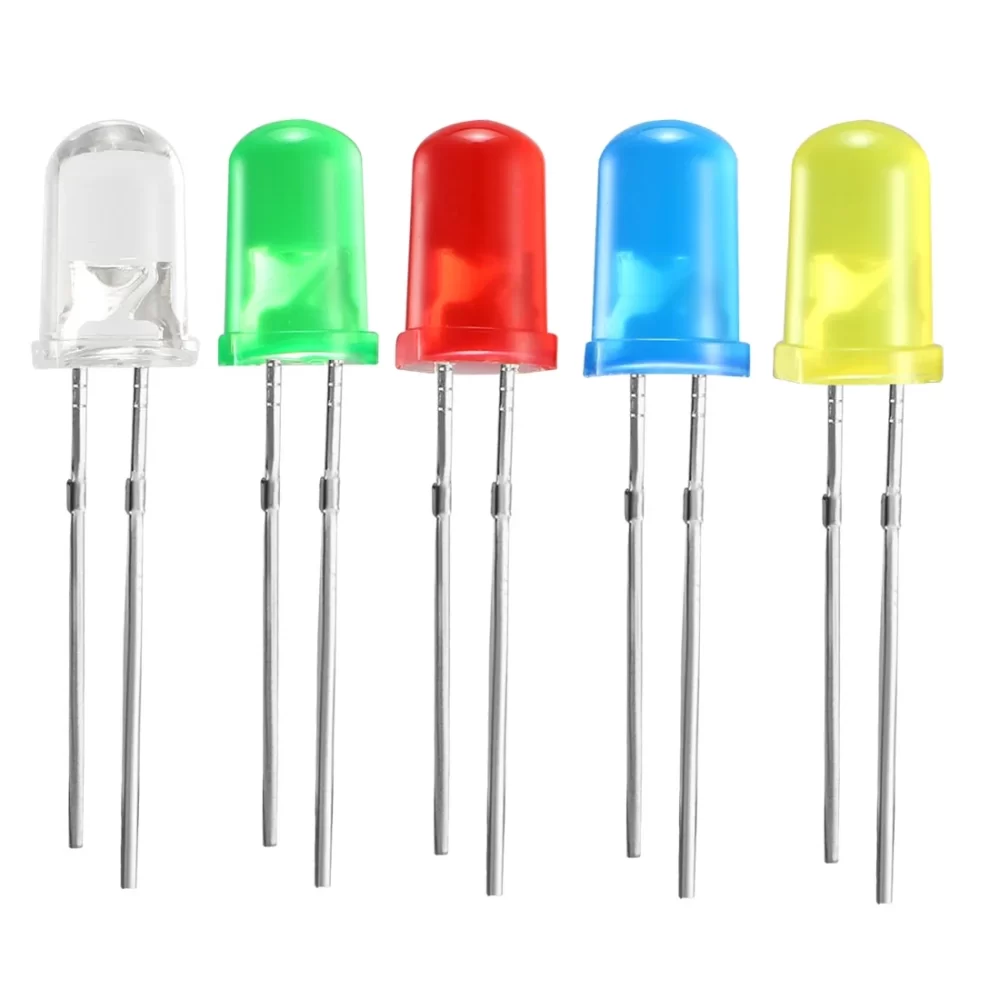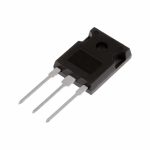Introduction to Diode Types
In the world of electronics, diodes play a pivotal role in circuit functionality. Understanding the various diode types is essential for anyone involved in electronic design or repair. Diodes, at their most basic level, allow current to flow in one direction while blocking it in the opposite direction, serving as a crucial component in controlling the flow of electricity.
Different diode types are designed for specific functions and applications. Each variety has unique characteristics that make it suitable for its intended purpose. From the standard Light Emitting Diode (LED) that emits light when electricity passes through, to the Laser Diode which is crucial in optical reading devices, the range and capabilities of diodes are vast.
Other diode types include the Avalanche Diode, which utilizes the avalanche effect for photodetection, and the Zener Diode, known for its ability to provide stable reference voltages. Moreover, Schottky Diodes are praised for their low forward voltage drop, particularly useful in rectifier applications, while Photodiodes play a significant role in light detection and as an integral part of solar panels.
Lastly, the P-N Junction Diode is the most common form, found in a plethora of applications due to its capability to facilitate current flow in one direction – a property widely exploited in rectification processes.
Throughout this guide, we’ll explore these diode types in more depth, highlighting their functionality, construction, and applications which are vital for a myriad of technological advancements. Whether you’re a seasoned professional or new to the field, this introduction to diode types will provide foundational knowledge for understanding their roles in electronics.
Light Emitting Diodes (LEDs)
Light Emitting Diodes, commonly known as LEDs, are a fundamental diode type in electronics. LEDs are unique because they produce light when an electrical current passes through them. This process, known as electroluminescence, occurs when electrons recombine with holes within the diode, releasing energy in the form of photons. The materials used in LEDs are specially chosen semiconductors that determine the color of the light emitted.
Overview of LED Functionality
LEDs function by allowing current to flow in a forward direction, which is when the anode is more positive than the cathode. When enough current flows, electrons and holes recombine at the junction of the semiconductor, resulting in light emission. The forward voltage needed to light an LED typically ranges between 2 and 3 volts, which is quite efficient compared to traditional light sources.
LEDs also have a long lifespan and are more energy-efficient compared to incandescent bulbs. They come in various colors, which are determined by the semiconductor material used, making them versatile for different applications.
Applications of LEDs
LEDs have a widespread use in today’s world due to their efficiency and longevity. They are most commonly found in indicator lights on electronic devices, traffic signals, and display screens. Additionally, LEDs are used in lighting for homes and offices, automotive headlights, and streetlights. Another growing area of LED application is in horticulture, where they are used to provide specific light spectra to aid plant growth.
Their small size and low power consumption make LEDs ideal for portable and battery-powered devices. Moreover, with the advancement in technology, LEDs are increasingly being used in medical devices for phototherapy and in communication technology as part of optical fiber networks.

Laser Diodes
Laser Diodes differ significantly from other types of diodes. They mainly produce coherent light.
Principles of Laser Diodes
Laser Diodes function based on the principle of stimulated emission of radiation. They typically consist of a p-n junction and an active laser medium. When electricity passes through, electrons are excited to a higher energy state. Upon returning to lower energy states, photons are emitted which form the coherent laser beam. This mechanism is essential in devices requiring precise and focused light.
Laser Diodes are specifically effective because of their capability to produce highly directional light. The light from Laser Diodes is very narrow in beam width and can be modulated at high speeds. These distinctive characteristics of the Laser Diode are due to the material used and the construction of the diode itself.
Use Cases in Modern Technology
Laser Diodes find extensive use in modern technology. They are a core component in optical disc drives like CD, DVD, and Blu-Ray players, allowing for the reading and writing of data. In telecommunications, they are used in fiber optics for transmitting data over long distances with higher bandwidth.
Moreover, Laser Diodes are integral in various medical instruments where precision is crucial, such as in surgical procedures and eye treatments. They are also ubiquitous in scanning and imaging equipment, barcode readers, and range finding devices.
In industrial manufacturing, Laser Diodes are used for cutting, welding, and material processing due to their precision and efficiency. Their application in consumer electronics extends to laser printers and 3D printing technology, illustrating the versatility and widespread utility of Laser Diodes in enhancing various technological advancements.
Avalanche Diodes
Avalanche Diodes are unique and valuable in electronics. They operate under the avalanche effect, a phenomenon critical in specific applications. These diodes involve the rapid multiplication of charge carriers. This occurs due to the high voltage across the diode, leading to a controlled avalanche of electron breakdown.
Mechanism of Avalanche Effect
The avalanche effect starts when the diode is reverse-biased. Under high reverse voltage, electrons gain substantial energy. As they travel, they collide with the lattice ions, generating more carriers. The process repeats, increasing the current rapidly. This feature makes Avalanche Diodes efficient for fast switches and circuit protection roles.
Role in Photodetection
Avalanche Diodes are prominent in photodetection due to their sensitivity to light. When photons strike the diode, they trigger the avalanche effect, enhancing the photocurrent. This makes them highly effective for detecting low light levels in various applications. Their ability to amplify weak signals is critical in security systems, medical devices, and optical communication technologies.

Zener Diodes
Zener Diodes are essential for maintaining stable voltages in various circuits. They stand out among diode types for their role in voltage regulation.
Design and Operational Features
Zener Diodes are designed uniquely to operate in a reverse-biased condition. They allow current to flow backwards when a critical voltage, known as the Zener voltage, is reached. This reverse breakdown does not damage the diode. Instead, it enables the Zener to stabilize voltage levels.
Their construction involves a heavily doped p-n junction. This design is aimed to ensure a sharp breakdown voltage. When the voltage across a Zener Diode exceeds its breakdown voltage, it starts conducting in the reverse direction. This feature is crucial to its functionality as a voltage regulator.
By exploiting this reverse breakdown region, Zener Diodes can maintain a constant output voltage despite variations in load or input voltage. This stability is vital for reliable circuit operation.
Significance in Voltage Regulation Applications
In voltage regulation applications, Zener Diodes are invaluable. They are used to produce a fixed, stable reference voltage. This is crucial in power supply circuits to prevent fluctuations that can harm sensitive components.
By connecting a Zener Diode in parallel with the circuit to be regulated, it acts as a voltage shunt. This setup ensures that any excess voltage is ‘shunted’ through the Zener, maintaining the desired voltage level. With their ability to accommodate changes in the load, Zener Diodes are fundamental in creating efficient, stable electronic devices.
These diodes also serve as overvoltage protectors. For instance, they can protect circuits from voltage spikes by clamping the voltage to a safe level. Their capacity to absorb transient voltage peaks makes them a key component in surge protection devices.
Schottky Diodes
Schottky Diodes are distinct and significant in the realm of diode types. Known for their unique characteristics, they are a key element in many electronic applications.
Characteristics of Schottky Diodes
Schottky Diodes have a low forward voltage drop, typically between 0.15 and 0.4 volts. This is because they are made differently than standard diodes. Their construction involves a metal to semiconductor contact, which allows for this reduced voltage drop. As a result, they switch on and off rapidly, enabling high-speed operation in circuits.
This diode type is less sensitive to temperature variations compared to other diode types. It means Schottky Diodes can work reliably over a wide range of temperatures. They often have a lower peak inverse voltage, which is something designers take into account when choosing the right diode for their circuits.
Importance in Rectifier Applications
In rectifier applications, the low forward voltage drop of Schottky Diodes is a major advantage. This feature allows for more efficient power conversion from AC to DC, a key benefit for power supplies in computer systems, solar cells, and other electronic devices that require precise voltage regulation.
Because they can switch quickly, Schottky Diodes are also used in radio frequency (RF) applications. In these settings, the diode’s ability to rapidly alternate between conducting and non-conducting states is crucial. Additionally, their fast recovery time makes them suitable for high-frequency rectifiers, which are often part of power regulators and switch-mode power supplies.
In summary, Schottky Diodes are favored for their swift operation and efficiency, making them an integral component in several modern-day electronics.

Photodiodes
Photodiodes are a key type of semiconductor device with specialized uses. They convert light into electrical current, exhibiting high sensitivity to light.
Function and Construction
Photodiodes are built with a p-n junction designed to respond to light. They operate in reverse bias, where the p-type semiconductor faces the incident light. When photons hit the diode, they generate electron-hole pairs, which then contribute to the photocurrent. The materials used, typically silicon or germanium, and the careful construction of layers define their responsiveness to different wavelengths of light.
Utilization in Light Detection and Power Generation
In light detection, photodiodes are vital for their precise and efficient response. They are used in devices like digital cameras, smoke detectors, and medical imaging equipment. Due to their ability to generate electrical current when exposed to light, they serve as the primary component of solar cells. Here, they convert solar energy into electrical energy, supporting renewable energy initiatives. Their function as power generators is instrumental in calculators, solar panels, and other devices relying on light as a power source.
P-N Junction Diodes
P-N Junction Diodes are widely recognized as rectifier diodes in various electronic applications. This type of diode combines p-type and n-type semiconductor materials, creating a junction that is integral to its operation. The unique configuration of the P-N Junction Diode allows it to efficiently control the direction of current flow, making it a staple in electronic circuit design.
Understanding P-N Junction Diode Structure
The structure of a P-N Junction Diode plays a crucial role in its functionality. It consists of two semiconductor layers: one doped with p-type material and the other with n-type material. The interface between these two layers forms the P-N junction. When positively-charged holes from the p-type material meet negatively-charged electrons from the n-type material at the junction, they eliminate each other, creating what’s known as the depletion zone.
This zone acts as a barrier that controls electron flow. When the diode is forward-biased, the barrier lowers, allowing current to pass through. Conversely, when it’s reverse-biased, the barrier heightens, preventing current flow. This selective conductivity is what makes the P-N junction diode crucial for tasks like rectification.
Applications in Rectification Processes
P-N Junction Diodes are fundamental in rectification processes where alternating current (AC) needs to be converted to direct current (DC). By only allowing current to flow in one direction, these diodes can change the AC input into a DC output, which is essential for powering various electronics.
They are also used in voltage multipliers and signal demodulation, contributing to their versatility in electronics applications. The simplicity, reliability, and efficiency of P-N Junction Diodes make them indispensable components in the design of power supplies, motor controls, and other electrical systems that require precise current control.









